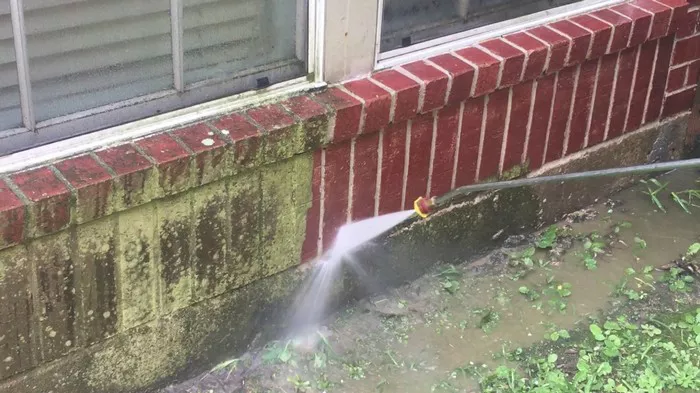Pressure washers are formidable tools in the arsenal of anyone who values cleanliness and efficiency. Whether you’re tackling stubborn grime on your driveway or giving your outdoor furniture a fresh lease on life, these machines are indispensable. However, like any mechanical device, pressure washers are not immune to issues. In this guide, we’ll delve into the most prevalent problems faced by pressure washer users and provide practical solutions to ensure you get the most out of your equipment.
Low Water Pressure
Problem: Users often grumble about inadequate water pressure during operation, which can severely hamper cleaning effectiveness.
Cause: Low water pressure can stem from various factors, including an insufficient water supply, kinks in garden hoses, or incorrect nozzle selection.
Solution:
1. Check Inlet Water Supply: Ensure that your pressure washer is receiving an ample water supply from the tap. If necessary, opt for a larger-diameter garden hose to maximize water flow.
2. Inspect Inlet Water Filter: Remove the garden hose connection and meticulously clear any debris clogging the filter to optimize water flow.
3. Verify Nozzle Selection: Make sure you’re using the appropriate nozzle for the desired pressure level. Using the wrong nozzle can significantly impact performance.
No Pressure
Problem: In some cases, pressure washers fail to generate any pressure at all, rendering them ineffective for cleaning tasks.
Possible Causes:
1. Damaged Unloader Valve: Check the unloader valve for damage and adjust the unloader screw as necessary. Inspect seals and springs for any signs of wear or tear.
2. Issues with Pump Inlet Valves/Manifold: Disassemble the pump and meticulously clean or replace components that may be obstructing proper functionality.
Pulsing Pressure (High Then Low)
Problem: Pressure fluctuations during operation can be a source of frustration and hinder the cleaning process.
Potential Causes:
1. Damaged Pump Inlet Valves/Manifold: Clean or replace these components to restore consistent pressure output.
2. Faulty Pump: Consider replacing the pump if issues persist, as a malfunctioning pump can cause erratic pressure fluctuations.
3. Air Suction: Turn off the pressure washer (while keeping the water supply on) and release pressure by squeezing the trigger gun to expel any trapped air.
4. Obstructed Nozzle or Filters: Check for and clear any blockages using a needle or a solution of vinegar to ensure unimpeded water flow.
Spiking Pressure
Problem: Pressure unexpectedly surges beyond the desired level, posing potential safety risks and compromising cleaning efficacy.
Cause: A poorly calibrated unloader valve can lead to pressure spikes.
Solution: Adjust the unloader valve to the appropriate pressure setting as outlined in the manufacturer’s manual to prevent pressure from exceeding safe levels.
Pressure Drops After a Few Seconds of Use
Possible Issues:
1. Blocked Nozzle: Clear any obstructions in the nozzle using a fine needle to restore proper water flow.
2. Unloader Valve Problems: If pressure drops persist, remove and clean or repair the unloader valve to ensure optimal performance.
Water Leaking
Problem Areas:
1. Pump Seals: Inspect the pump for any signs of water leakage, which may indicate broken, cracked, or worn seals that require replacement.
2. Garden Hose Connection: Ensure that all connections are secure and intact, replacing any damaged rubber washers to prevent water leakage.
3. Spray Wand and Hose Connections: Check for damaged o-rings at the connections and replace them if necessary to prevent water leaks.
Investment Advice
When it comes to purchasing a pressure washer, quality matters. Investing in a reputable brand ensures reliability and durability, reducing the likelihood of encountering issues down the line. Additionally, adhering to the manufacturer’s recommended maintenance schedule is crucial for prolonging the lifespan of your pressure washer. Regularly cleaning filters, inspecting seals, and replacing worn components can help prevent problems before they arise. Finally, always prioritize safety by familiarizing yourself with the operator’s manual for troubleshooting tips and adhering to recommended safety precautions.
Conclusion
While pressure washers are powerful tools for tackling tough cleaning tasks, they are not immune to issues. By familiarizing yourself with the common problems outlined in this guide and implementing the suggested solutions, you can ensure that your pressure washer operates at peak performance, delivering optimal cleaning results time and time again. Remember, investing in quality equipment and prioritizing regular maintenance are key to maximizing the lifespan and efficiency of your pressure washer. So, equip yourself with the knowledge and tools needed to troubleshoot common issues, and enjoy the satisfaction of a sparkling clean environment with minimal hassle.

